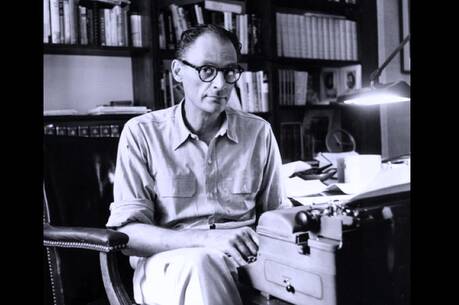Imagine this: Against long odds, you, a midcareer anthropologist working with four other university teams, have gained grant support from the U.S. National Science Foundation and permission from the government of Brazil to be the sole research team allowed to investigate a newly discovered tribe of Amazon Indians deep in the remotest jungle. This tribe has had no contact with any Western peoples and little contact with equally remote neighboring tribes, with whom they have had unpleasant and even warlike encounters. The tribe has its own language and has built up a considerable population that controls significant areas of the jungle, and has probably done so for centuries.
The conditions of your unique access are draconian, however. There must be no contact whatsoever between your research team and any member of the tribe. For this reason, all surveillance will be done at long range, using high-tech equipment like powerful automatic cameras, carefully camouflaged, and long-range microphones.
Moving cautiously and guided by surreptitious flyovers of ultralight drone aircraft with infrared sensing capabilities, your research team is able to arrive unseen at the edge of the tribe’s territory and locate a village across a river that, as far as you can determine from the surveillance, is never crossed by the tribe members. On a low bluff across the river, you set up your equipment and begin recording the sights and sounds of the village.
One day, several months later, you download the week’s data on your iPad. But on the way back from checking your equipment, you slip and fall on the rough, barely visible track you follow to access the monitoring site. Your iPad slips unnoticed out of your backpack and into the brush.
In the village, a key ingredient of the poison sap used to stun fish is running low. One villager is chosen to cross the river and access the rare trees that produce this sap. Tracking through the jungle, the villager comes across this weird object in the brush, unlike anything he has ever seen before. Racked with fear and uncertainty, he picks it up in a large leaf so as not to touch it and runs back to his canoe and crosses the river to his village.
Meanwhile, there is panic among the members of the research team. They race back to find the iPad only to see a villager pick it up and head back across the river. The loss of the iPad is such a gross violation of the terms of the grant and access that the entire project is terminated.
After some discussion the village decides it wants nothing to do with this object, and it is carried across some miles to where the tribe’s chief shaman resides. The shaman contemplates this object, using a keen intelligence that is in no way inferior to that of the now-disgraced research scientist who lost the iPad. While the tribe knows about metals from the native copper deposits in the nearby hills, the metal of the iPad is different, smoother, shiny, unlike anything the shaman has ever seen. He also knows of transparent crystals, clear topazes found in deposits on the riverbanks, but the screen he sees is far beyond anything like that. Thus he concludes that there is some “Greater Reality” out there capable of making this object, whose existence is undeniable but whose nature can be learned only by contemplation of the iPad and intelligent speculation.
The Foundations of the Universe
So it is with physics today, where the existence of the Big Bang that started our universe roughly 14.73 billion years ago cannot be denied. At the Big Bang, there came simultaneously into existence the four foundations of our universe: time, space, all the energy of the universe and the laws of physics and its fundamental free parameters. These laws are sweeping philosophical statements, like “the laws of physics are the same throughout the universe” or “the laws of physics are constant in time.” These lead to the great conservation statements: “Energy-mass is conserved in all interactions.” But the laws of our four-dimensional universe do not allow for the Big Bang.
Albert Einstein said that “the most incomprehensible thing about the universe is that it is at all comprehensible.” He said this well before the stunning discoveries of the last half of the 20th century that have pushed physics and its ancillary disciplines to the very frontiers of space and time. What we found has laid a whole new foundation for belief that has shaken the natural skepticism of many of the most profound thinkers in physics. The Big Bang violates almost every law that physics has uncovered. Thus, it is certain that there has to be a “Greater Reality” able to spawn our universe that is not limited by the laws of our tangible universe.
Returning to our shaman, in the course of handling the iPad, he turns it on by accident and sees on the screen scenes of the villagers that very morning, with their speech and actions recorded over several hours. As he slides his hand on the screen, more images from previous days appear, showing that the Greater Reality was observing their village life over weeks, even months.
What is he to make of this? Obviously the object has internal capabilities that are simply beyond anything the tribe can conceive. Equally he suspects that the technology of the device is so advanced that the Greater Reality could probably have destroyed the village if it so wished. But the careful surveillance certainly shows that the Greater Reality was interested in the tribe and took great care not to interfere with the tribe; otherwise the surveillance would have been discovered months ago. That such care was taken at least hints that the Greater Reality cares for the tribe and protects them from this alien knowledge that alone could destroy the careful fabric of the tribe’s existence.
So it is with our universe. We have discovered that the laws of physics also include parameters, roughly 30 in number, that tie the laws to the physical universe. The statement “The laws of physics are constant in systems moving at constant relative velocity” is the principle of relativity, whose key constant is the speed of light in a vacuum, c, roughly 187,000 miles per second. This parameter appears again in Einstein’s mass-energy relationship: energy equals mass times the speed of light squared, c2—which is absolutely key to the energy of stars and how long they can burn. These 30 or so constants cannot be predicted but must be measured. All evidence shows that these laws and their fundamental parameters, once established, span all of space and time and have not changed since that instance. Physics shows a one-way universe that proceeds according to the arrow of time to a demise in the grey death of entropy, the big rip of dark energy or other means as yet unknown.
Thus, like the shaman, we are faced with the certain existence of a Greater Reality that can never be approached through the scientific method, since no measurements are even conceivable outside of our universe. We can only learn of the nature of the Greater Reality through intelligent speculation: scientific, philosophical or theological speculation guided by our native intelligence and the nature of the observable universe, unless the Greater Reality chooses to intercede.
A Garden of Spirit
The discoveries of the past 30 years show that the laws of our universe are exquisitely crafted so as to allow, even demand, the development of carbon-based life on Earth-like planets around other stars that, every week, grow in number. That such laws occur by accident is statistically impossible, meaning that in trillions of random universes with slight differences in the 30 fundamental parameters of physics, not one would have the right combination for life to occur. As one of 30 examples, if the speed of light—“c”—were very slightly greater, the sun and other main sequence stars would burn out so fast that evolution would not have enough time to evolve sentient beings. A slightly smaller “c” would not allow most stars to burn at all, thus vastly reducing the number of planets that could exist in the zone of liquid water, which is essential to carbon-based life.
Clearly our Greater Reality is not random but is coded so that life and intelligence can evolve, given enough time and favorable conditions. One of the benefits of this approach is that one can never view the stars at night as simply a cold, sterile collection of hot plasma spheres. What one is looking at is an enormous garden, a garden of life, a garden of intelligence, a garden of spirit. The evolved creatures on other planets may not look like us physically, but they and we have a level of intelligence that can discover the laws and secrets of the universe. They and we can value non-physical spiritual realities like truth, love, honor and beauty. So we can modify Einstein’s statement to read: The most incomprehensible thing about the universe is that we exist to discover that it is at all comprehensible.
The simplest explanation for the recent discoveries of physics is an all-powerful and intelligent Creator, the dreaded “strong anthropic principle.” One can achieve the same results via the “weak anthropic principle,” in that one of the inconceivably large number of parallel universes possible, but unprovable, via M theory might by statistical chance have the right parameters for life. This explanation shows such an ugly inefficiency that I find it unattractive, while it only kicks the conceptual can farther down the road and requires the spawning of trillions upon trillions of universes, not just one, to get intelligent life.
I believe that the Creator, having gone to such enormous and careful efforts to craft a universe designed for intelligent life, would, like any gardener, carefully cultivate and encourage the fruits of the land, with spiritual intervention, indirect and direct. The Creator, to continue the gardener analogy, also expects a harvest. I propose that the harvest is the fruits of the spirit, love, honor, beauty and so forth from freely choosing intelligent beings that are able to discern that the Creator exists and cares for us and, as a corollary, are able to actively care for all of creation and especially our fellow sentient beings. So we, if we choose wisely, can be the harvest and can bring back to the Creator the one thing that the Creator cannot do, the one aspect of creation that is not defined by the immutable laws of science—the spiritual fruits of freely choosing beings, and their lifetime of love of the Creator and fellow intelligent beings, and love and protection of all of creation. I believe that the new physics in the past 30 years has laid a firm foundation of fact that supports, and does not challenge, Christian belief.








